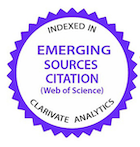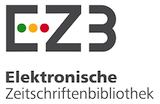Analysis of variables inherent to the dynamics of the practice of vaquejada to determine its influence on the result obtained in the competition
DOI:
https://doi.org/10.1590/1809-6891v24e-74483EAbstract
The objective of this work was to evaluate several attempts to knock down neats and to correlate the success obtained with actions performed by the horse/rider sets through an analysis of public domain videos of vaquejadas. Approximately 300 videos were considered, and the groups were evaluated according to the competition category, that is, amateur/aspirant and professional, and the animals used in the test, that is, pulling or tracking of the neat. It was found that for the pull set in the professional competition category, only the characteristics of directing the cow on the track, and the guiding behavior and positioning in the pull were significant (p<0.01), while for the amateur/aspirant category, the characteristics of remaining in the pull after falling of the cattle and of the behavior at the gate had an effect (p<0.01). The characteristic of remaining in the pull after the fall of the neats, in the category of professional pulling athletes, exists in greater prevalence during the competition with 85.3%, while the characteristic of directing the neat to the side of the track is performed by 87.6% of the competitors. For the set used to track the cattle, the values of the dimensions 1 and 2 were 96.56% and 3.43%, respectively, which is 99.9% of the total variance of the data based on those selected for the final result of “earn the ox”. The use of multiple diversity analysis in this study of variables associated with the vaquejada set proved to be quite advantageous, and there was not much variation in the elements obtained with a greater weight in the determination of the final result.
Keywords: equine breeding; effort; pull horse; track horse.
Downloads
References
Mingoti, S.A. Análise de dados através de métodos de estatística multivariada: uma abordagem aplicada. Belo Horizonte: UFMG, 2005. 297p.
MAPA. Ministério da Agricultura, Pecuária e Abastecimento. Revisão do Estudo do Complexo do Agronegócio do Cavalo. 2016. Disponível em: http://www.agricultura.gov.br/. Acesso em agosto de 2019.
Sousa, W. T. N. D., Gonçalves, T. F., Tolentino, M. L. D. L., Santos, N. P. D. S., Silva Filho, M. L. D., & Sousa, D. C. D. Avaliação ultrassonográfica dos tendões flexores dos membros anteriores em equinos de vaquejada na microrregião do Alto Médio Gurgueia, Sul do Piauí, Brasil. Revista Brasileira de Ciência Veterinária, v. 28, n. 01, p. 09 - 13, 2021.
Lopes, K.R.F. Batista, J.S.; Dias, R.V.C.; et al. Influência das competições de vaquejada sobre os parâmetros indicadores de estresse em equinos. Ciência Animal Brasileira, v. 10, n. 2, p. 538-543, 2009.
Sousa, R. A., Silva, G. A., Rêgo, G. M. S., Neto, J. R. G., Gottardi, F. P., & Machado, L. P. Effect of vaquejada exercise on the physiological and biochemical profiles of sporadic competitors and atletic horses. Acta Veterinaria Brasilica, v. 12, n. 01, p. 17 - 23, 2018.
Dias, R. V. C. et al. Avaliação física e laboratorial da síndrome cólica de equinos em parque de vaquejada. Veterinária e Zootecnia, v. 20, n. 04, p. 658 - 672, 2013.
Lage, R. A. et al. Fatores de risco para a transmissão da anemia infecciosa equina, leptospirose, tétano e raiva em criatórios equestres e parques de vaquejada no município de Mossoró, RN. Acta Veterinária Brasílica, v. 01, n. 03, p. 84 - 88, 2007.
Arruda, S. S. B. et al. Clinical and blood gasometric parameters during Vaquejada competition. Pesquisa Veterinária Brasileira, v. 35, n. 11, p. 889 - 892, 2015.
Gomes, N. M. A. et al. Adaptações fisiológicas de equinos durante torneio de vaquejada. Enciclopédia biosfera, v. 11, n. 21, p. 36 - 49, 2015.
Greenacre, M. J. Correspondence Analysis in Practice. 2 ed. Chapman & Hall/CRC. 2007.
Moita neto, J.M. Estatística Multivariada – Uma visão didática-metodológica. Crítica. 2004.
Regatieri, I.C.; mota, M.D.S. Melhoramento genético de equinos: aspectos bioquímicos. ARS Veterinaria, Jaboticabal-SP, v.28, n.4, p. 227-233, 2012.
Published
How to Cite
Issue
Section
License
Copyright (c) 2023 Brazilian Animal Science/ Ciência Animal Brasileira

This work is licensed under a Creative Commons Attribution 4.0 International License.
Authors who publish with this journal agree to the following terms:
- Authors retain copyright and grant the journal right of first publication with the work simultaneously licensed under a Creative Commons Attribution License that allows others to share the work with an acknowledgement of the work's authorship and initial publication in this journal.
- Authors are able to enter into separate, additional contractual arrangements for the non-exclusive distribution of the journal's published version of the work (e.g., post it to an institutional repository or publish it in a book), with an acknowledgement of its initial publication in this journal.
- Authors are permitted and encouraged to post their work online (e.g. in institutional repositories or on their website) prior to and during the submission process, as it can lead to productive exchanges, as well as earlier and greater citation of published work (See The Effect of Open Access).































